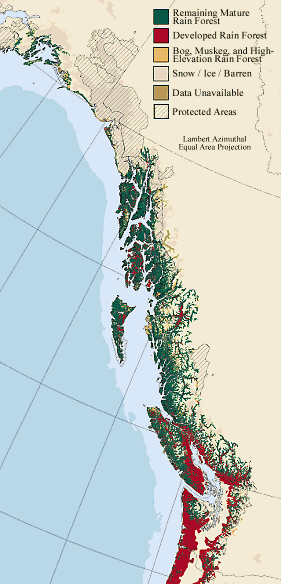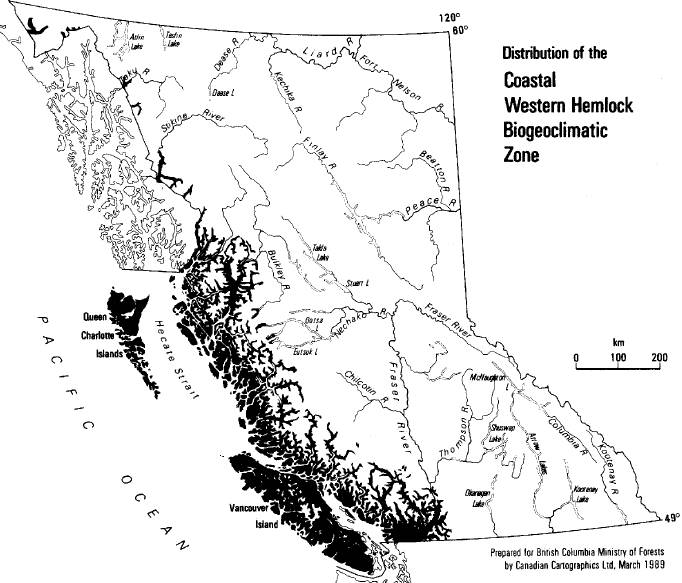|
|
||
|
|

The Town
The town of Bamfield has a rich anthropogenic history and fascinating local ecology. It was the location of the eastern terminus of the trans-pacific telegraph cable from 1901-1959. Established in 1972, the Bamfield Marine Science Center (BMSC) is now located where the original cable-station and associated structures were constructed. The BMSC is a world-class facility that conducts research on marine ecosystems and educates the public about the local environment.

|
About the Area
Bamfield is located on the West coast of Vancouver Island (see an interactive map). It is sandwiched on the North and South by Pacific Rim National Park. This area is broadly classified as part of the rare temperate rainforest biome, which covers only 0.02% of terrestrial land on earth (Suzuki 2007). Temperate rainforest is defined as having an annual rainfall exceeding 250 cm/year. It is generally categorized by tall coniferous trees dominating the upper canopy, with lush undergrowth, and diverse epiphytic communities such as lichens and mosses. Temperate rainforest watersheds typically drain into the ocean and are shaped by the cycling of nutrients from land and sea (Inforain 2007).
High productivity and abundance of fuels and timber has made temperate rainforests prime locations for extractive industries such as timber. Their coastal locations have intensified threats due to urban expansion and development. Over forty four percent of the original temperate rainforest in North America is developed (Inforain 2007). These activities along with agricultural activities, air pollution, global warming, and lack of knowledge are threats specific to bryophyte diversity in the temperate rainforest (Ryan 1996).
Indigenous Species
On a more local scale, at the mid to lower elevations of the temperate rainforest, is the Coastal Western Hemlock Biogeoclimatic zone. This area is the rainiest biogeoclimatic zone in British Columbia and is described by the dominance of Western hemlock (Tsuga heterophylla), Western red cedar (Thuja plicata) and Douglas fir (Pseudotsuga menziesii) in the forest canopy (Meidinger and Pojar 1991). Other common trees include Amabilis fir (Abies amabilis), Yellow cedar (Chamaecyparis nootkatensis), and Sitka spruce (Picea sitchensis). Red alder (Alnus Rubra) is common in disturbed and logged sites. The understory in the Bamfield area is dominated by salal (Gaultheria shallon) and Vaccinium species.
It is estimated that 31.09% of rare and endangered bryophyte species occur in the Coastal Western Hemlock zone (Ryan 1996). Ten rare bryophyte species have been found on Western Vancouver Island. Low elevation species such as Pohlia sphagnicola, Seligeria acutifolia, and Sphagnum subobesum have been found in unprotected locations in the Bamfield area and are considered highly at risk due to logging activities (Ryan 1996).
The Coastal Western Hemlock zone experiences few large-scale natural disturbances. Fire-cycle intervals are estimated to be in excess of 600 years (Arsenault 1995). However, human induced disturbances such as

|
The temperate rainforest in British Columbia is a rare and precious ecosystem. This study aims to gain insight into the diversity and ecology of bryophytes in the Bamfield area so we can better preserve and appreciate this rare biome. Access to the unique local ecology and the quality of facilities at the BMSC provide an excellent environment for the study of coastal bryophytes.